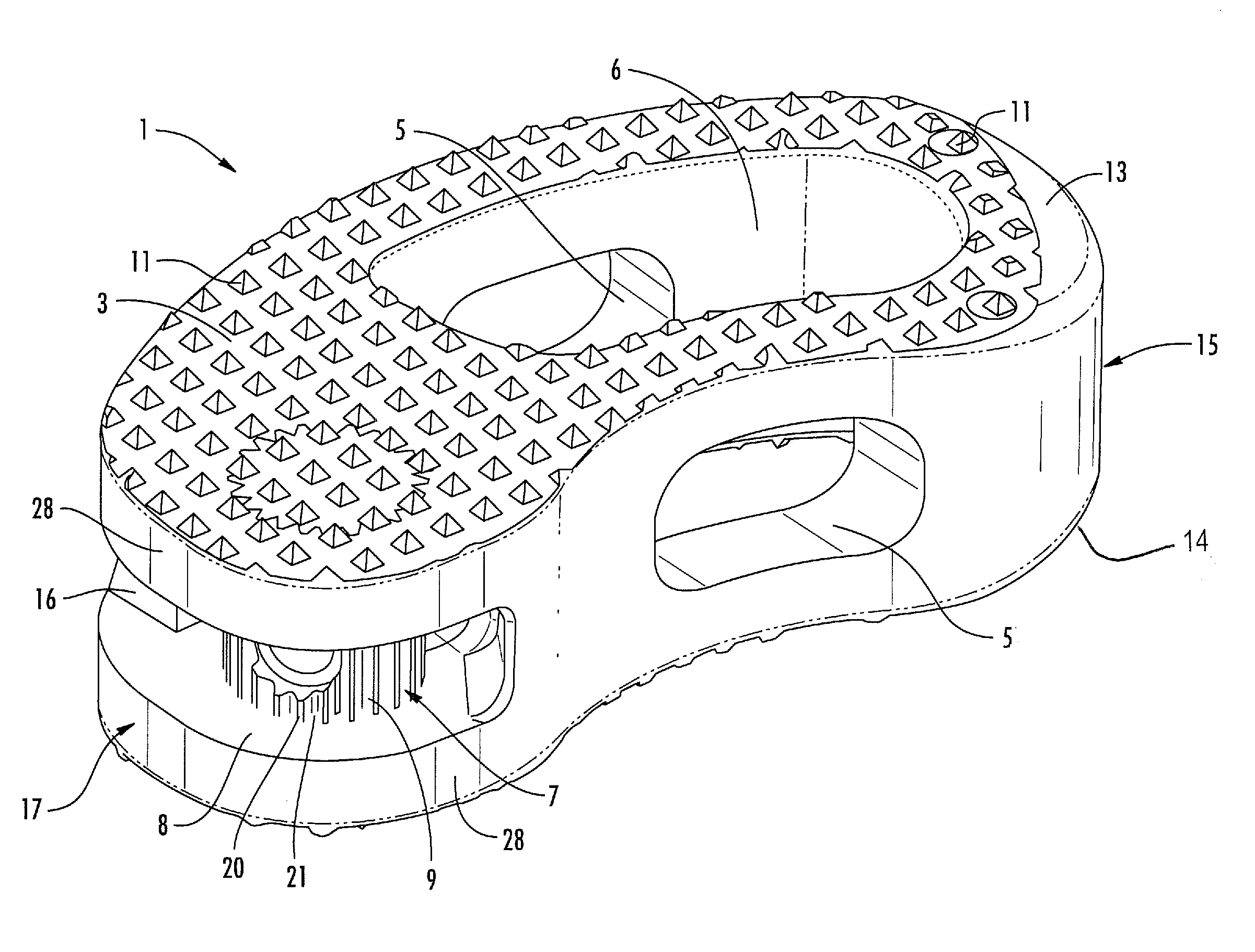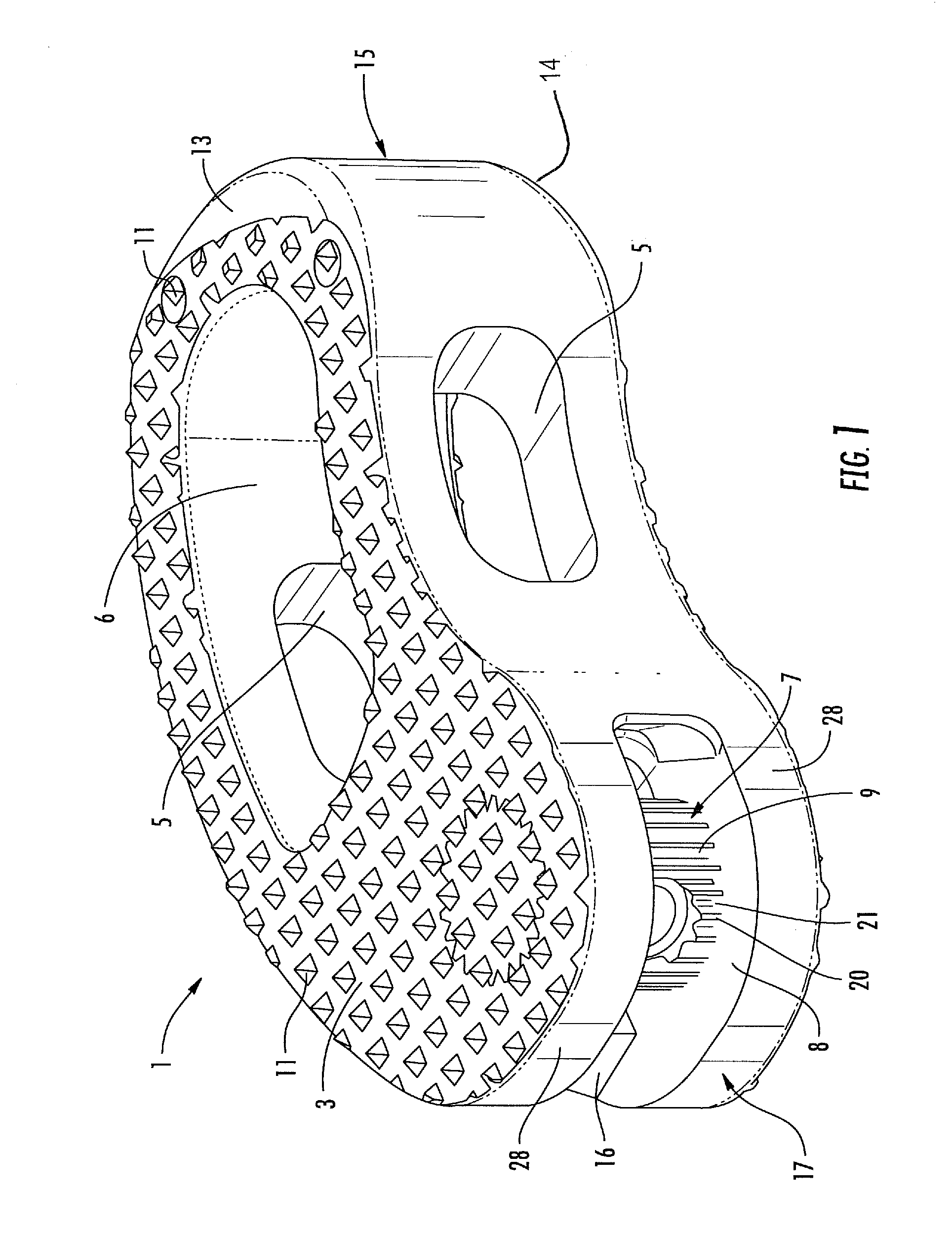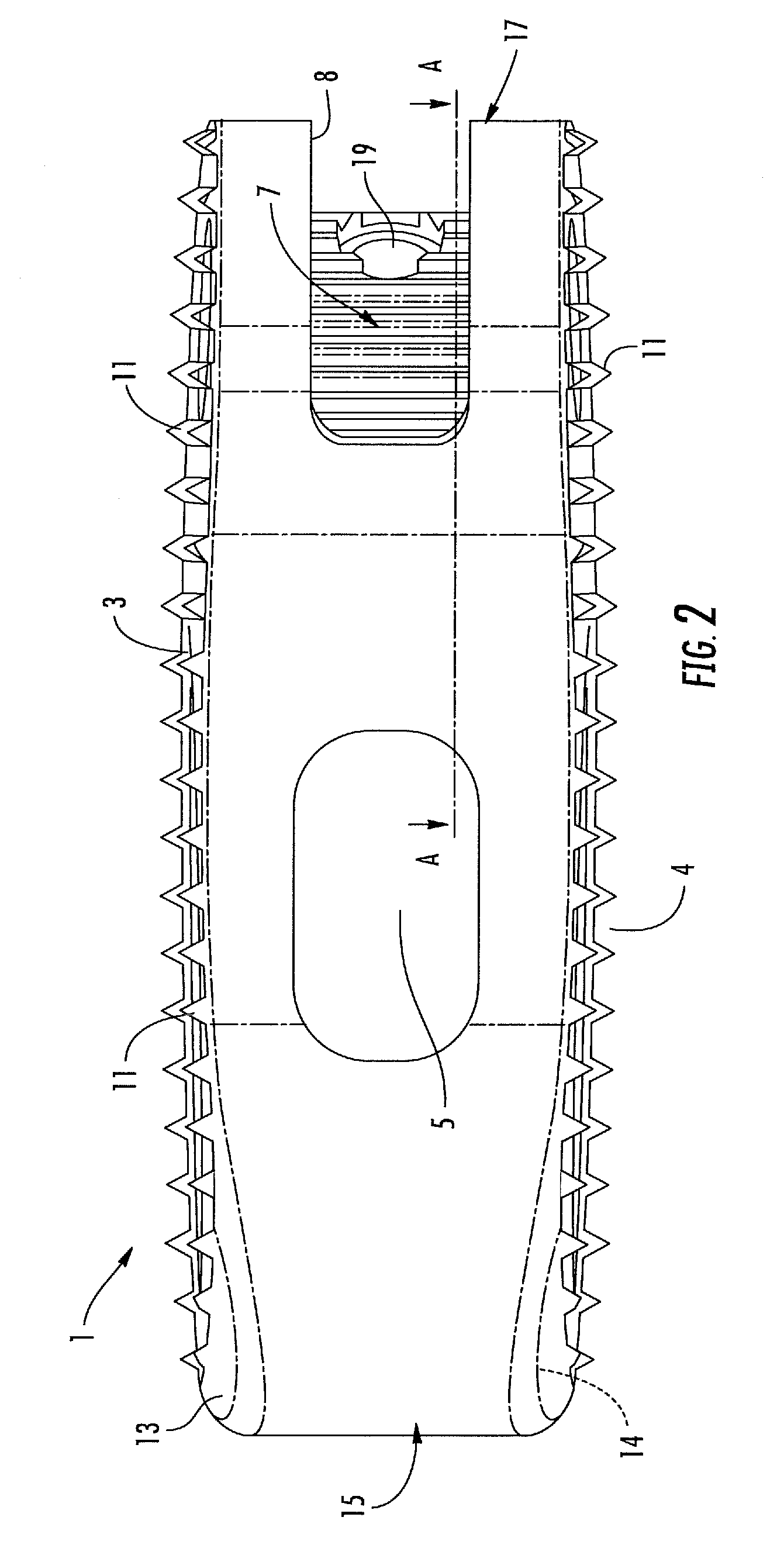Intervertebral implant for the fusion between two vertebral bodies of a vertebral column and corresponding positioning instrument
a technology of intervertebral implants and vertebral bodies, which is applied in the field of intervertebral implants for fusion between vertebral bodies of vertebral columns, can solve the problems of inability to engage the instrument in-situ, the instrument cannot allow angular adjustment of the implant with respect to the instrument, and the working steps are not simplified compared to a simple thread. , to achieve the effect of simple operation procedure, simple structure and high primary stability
- Summary
- Abstract
- Description
- Claims
- Application Information
AI Technical Summary
Benefits of technology
Problems solved by technology
Method used
Image
Examples
Embodiment Construction
[0038]With reference to the figures, an intervertebral implant realized according to the present invention permits the fusion between two vertebral bodies of a vertebral column. The implant 1 is specifically intended to be used as an intervertebral body fusion device. The implant 1 has been specifically realized for allowing vertebral operations according to the requirement of the modern Minimally Invasive Surgery. The implant 1 is mainly dedicated to the use in TLIF (Transforaminal Lumbar Intervertebral Fusion) surgery, however, nothing prevents that it may be adopted in other surgery techniques, such as PLIF or OILF.
[0039]The implant 1 has a main body 2 realized with a biocompatible radiolucent synthetic material, for example, a Polyetheretherketone (PEEK) structure having a favorable modulus of elasticity. However, other appropriate implant materials are usable as well, for example, with or without a titanium coating.
[0040]The body 2 is Kidney-bead shaped and available in several...
PUM
 Login to View More
Login to View More Abstract
Description
Claims
Application Information
 Login to View More
Login to View More - R&D
- Intellectual Property
- Life Sciences
- Materials
- Tech Scout
- Unparalleled Data Quality
- Higher Quality Content
- 60% Fewer Hallucinations
Browse by: Latest US Patents, China's latest patents, Technical Efficacy Thesaurus, Application Domain, Technology Topic, Popular Technical Reports.
© 2025 PatSnap. All rights reserved.Legal|Privacy policy|Modern Slavery Act Transparency Statement|Sitemap|About US| Contact US: help@patsnap.com



